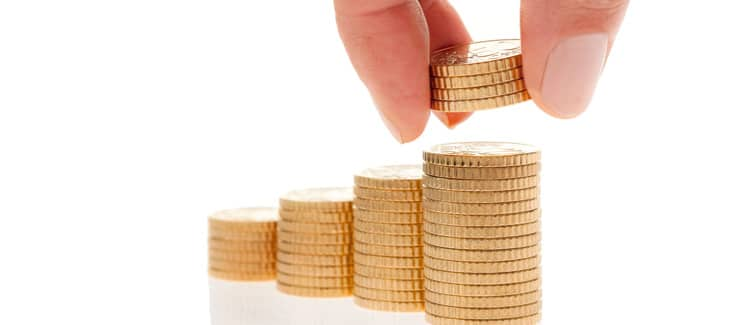Tax Rebate under Section 87A
Union Finance Minister Nirmala Sitharaman presented her eighth consecutive Union Budget on February 1, 2025. She significantly increased the income tax rebate under Section 87A from ₹7 lakh to ₹12 lakh. This means that individuals with an income of up to ₹12 lakh will now have zero tax liability, providing substantial relief to taxpayers.
Let us learn about this section in detail for the Financial Year 2025-26 (AY 2026-27).
What is Section 87A Rebate for Financial Year (FY) 2025-26 and Assessment Year (AY) 2026-27?
Under Section 87A of the Income Tax Act, 1961, a tax rebate is offered to resident individual taxpayers with taxable income up to ₹7 lakh. As per the Union Budget 2025, the rebate limit for the new tax regime has been increased to ₹12 lakh for FY 2025-26 (AY 2026-27), up from ₹7 lakh in FY 2024-25 (AY 2025-26). This change provides greater relief to taxpayers by reducing their tax liability.
-
This means that a resident individual with taxable income up to ₹12,00,000 can avail of a rebate of 100% of payable income tax on total income,
-
Under the old tax regime, the rebate limit remains the same at ₹5,00,000, and the rebate amount is ₹12,500.
Does This Mean Individuals Earning ₹15 lakhs Will Have to Pay Tax on Only ₹3 lakhs?
No, the rebate is only applicable to those earning up to ₹12 lakhs. If your taxable income is more than ₹12 lakh, even by a single rupee, you will be taxed according to the slab rates under the new tax regime.
Tax Slab Rates for FY 2025- 26 (AY 2026-27) as per Union Budget 2025
| Tax Slab | Tax Rate |
| 0 - ₹4,00,000 | No Tax |
| ₹4,00,001 - ₹8,00,000 | 5% |
| ₹8,00,001 - ₹12,00,000 | 10% |
| ₹12,00,001 - ₹16,00,000 | 15% |
| ₹16,00,001 - ₹20,00,000 | 20% |
| ₹20,00,001 - ₹24,00,000 | 25% |
| ₹24,00,001 and Above | 30% |
What is the Amount of Rebate u/s 87A for FY 2025-26?
For the Financial Year 2025-26, the amount of tax rebate available under Section 87A of the Income Tax Act, 1961, will be ₹12,00,000 as per the following:
-
Tax Rebate under the Old Tax Regime:
-
Individuals opting for the old tax regime with a taxable income of up to Rs. 5 lakh can claim a tax rebate of Rs. 12,500 under Section 87A.
-
The rebate will be the lower of 100% of income-tax liability or Rs. 12,500.
-
The tax liability must be lower than Rs. 12,500 to claim this rebate.
-
-
Tax Rebate under the New Tax Regime:
-
A full rebate for taxable income of up to ₹12 lakhs or an amount of ₹60,000 for the taxpayers opting for the new tax regime under Section 115 BAC(1A).
-
This rebate covers the gap between the tax payable on the total income and the amount by which it exceeds ₹12 lakhs.
-
For more clarity, have a look at the following overview of the tax rebate benefits:
Income Tax on Slabs and rates
Benefit of Rebate Benefit Total Benefit Tax After Rebate Benefit Present (A) Proposed (B) Rate/Slab (A) - (B) Full up to ₹12 lakhs 8 lakhs ₹30,000 ₹20,000 ₹10,000 ₹20,000 ₹30,000 0 9 lakhs ₹40,000 ₹30,000 ₹10,000 ₹30,000 ₹40,000 0 10 lakhs ₹50,000 ₹40,000 ₹10,000 ₹40,000 ₹50,000 0 11 lakhs ₹65,000 ₹50,000 ₹15,000 ₹50,000 ₹65,000 0 12 lakhs ₹80,000 ₹60,000 ₹20,000 ₹60,000 ₹80,000 0 16 lakhs ₹1,70,000 ₹1,20,000 ₹50,000 0 ₹50,000 ₹1,20,000 20 lakhs ₹2,90,000 ₹2,00,000 ₹90,000 0 ₹90,000 ₹2,00,000 24 lakhs ₹4,10,000 ₹3,00,000 ₹1,10,000 0 ₹1,10,000 ₹3,00,000 50 lakhs ₹11,90,000 ₹10,80,000 ₹1,10,000 0 ₹1,10,000 ₹10,80,000 -
What are the Steps to Claim Rebate u/s 87A Rebate in ITR Filing?
To claim a tax rebate under Section 87A for the Financial Year 2025-2026, follow these steps:
Step 1: Determine your Gross Total Income for the Financial Year 2025-2026.
Step 2: Subtract any tax deductions you are eligible for, such as those for life insurance policies, investments, and other tax-saving instruments.
Step 3: Calculate your total income after subtracting the tax deductions available under IT Act, 1961.
Step 4: Declare your Gross Income and tax deductions while filing your Income Tax Return (ITR).
Step 5: After filing your ITR, you can claim a tax rebate under Section 87A.
*Note: the maximum tax rebate available under Section 87A in the old tax regime for the financial year 2025-26 (Assessment Year 2026-27) is Rs. 12,500.**You can Claim deductions under Section 80C for investments like ULIPs, 80D for medical insurance, 80CCD for NPS contributions, and 80G for donations to reduce your total income.
What is the Eligibility Criteria to Claim Income Tax Rebate u/s 87A for FY 2025–26 (AY 2026 – 27)?
You can claim a tax rebate under Section 87A of the Income Tax Act if you meet the following conditions:
-
The taxpayer must be an individual resident in India.
-
Your total income after reducing the deductions under Chapter VI-A (Section 80C, 80D, and so on) should not exceed Rs 5 lakh.
-
The tax rebate is limited to ₹12,500 under the old tax regime and ₹60,000 as per the new tax regime for FY 2025-26 (AY 2026-27).
-
If your total tax payable is less than Rs 12,500, you will not have to pay any tax.
-
Senior citizens (aged 60 to 80 years) are eligible to claim the rebate.
-
Super senior citizens (aged above 80 years) are not eligible to claim the rebate.
Illustration of Tax Rebate u/s 87A for FY 2025-26 (AY 2026-27)
Some examples of the income tax rebate allowed to you under Section 87A for Financial Year 2025 – 2026 and AY 2026 – 27 are as follows:
| Total Annual Income (Rs.) | Tax Payable before Cess | Rebate Under Section 87A | Tax Payable+4% Cess |
| Rs. 2.65 lakhs | Rs. 750 | Rs. 750 | 0 |
| Rs. 2.7 lakhs | Rs. 1,000 | Rs. 1,000 | 0 |
| Rs. 3 lakhs | Rs. 2,500 | Rs. 2,500 | 0 |
| Rs. 3.5 lakhs | Rs. 5,000 | Rs. 2,500 | Rs. 2,500 + cess** |
Example:
For the Financial Year 2024-25 (Assessment Year 2025-26), let's understand the tax liability of Mr. Mohan, a 61-year-old retired person with a monthly pension of Rs 5,000 and Long Term Capital Gains (LTCG) from equity-oriented funds is Rs 4,70,000.
-
Total Pension Income: Rs. 5,000 x 12 = Rs 60,000
-
LTCG on Equity-oriented Funds: Rs. 4,70,000
Since Mr. Mohan is above 60 years but below 80 years, his basic exemption limit is Rs 3 lakh. The basic exemption limit should first be adjusted against normal income other than LTCG on equity-oriented funds.
After adjusting the basic exemption limit with the pension income (Rs. 3 lakh - Rs. 60,000), we are left with a balance of Rs 2.4 lakh. This balance will then be adjusted against the LTCG on equity-oriented funds, leaving us with a balance LTCG of Rs. 2.3 lakh (Rs. 4.7 lakh - Rs. 2.4 lakh).
LTCG on equity-oriented funds is taxable at 10% on the amount exceeding Rs 1 lakh. Therefore, the tax will be levied on Rs 1.3 lakh (Rs. 2.3 lakh - Rs. 1 lakh) at 10%, resulting in a tax liability of Rs 13,000.
**Please note that the rebate under Section 87A is not applicable against tax on LTCG of equity-oriented funds (Section 112A). Therefore, Mr. Mohan’s final tax liability would be Rs. 13,000 plus health & education cess at 4%, which amounts to Rs. 13,520.
What is the Rebate Limit under Section 87A for Previous Financial Years?
The limits of income tax rebate under Section 87A of the IT Act, 1961, for previous financial years are mentioned below:
| Financial Year | Total Income Taxable Limit | Rebate under Section 87A |
| 2025-26 | New Tax Regime: Rs. 12 lakhs | Rs. 60,000 |
| Old Tax Regime: Rs. 5 lakhs | Rs. 12,500 | |
| 2024-25 | New Tax Regime: Rs. 7 lakhs | Rs. 25,000 |
| Old Tax Regime: Rs. 5 lakhs | Rs. 12,500 | |
| 2023-24 | New Tax Regime: Rs. 7 lakhs | Rs. 25,000 |
| Old Tax Regime: Rs. 5 lakhs | Rs. 12,500 | |
| 2022-23 | Rs. 5 lakhs | Rs. 12,500 |
| 2021-2022 | Rs. 5 lakhs | Rs. 12,500 |
| 2020-2021 | Rs. 5 lakhs | Rs. 12,500 |
| 2019-2020 | Rs. 5 lakhs | Rs. 12,500 |
| 2018-2019 | Rs. 3.5 lakhs | Rs. 2,500 |
| 2017-2018 | Rs. 3.5 lakhs | Rs. 2,500 |
| 2016-2017 | Rs. 5 lakhs | Rs. 5,000 |
| 2015-2016 | Rs. 5 lakhs | Rs. 2,000 |
| 2014-2015 | Rs. 5 lakhs | Rs. 2,000 |
| 2013-2014 | Rs. 5 lakhs | Rs. 2,000 |
What are the Things to Remember Before Availing Rebates Under Section 87A?
Before availing the rebate under Section 87A, it is important to remember the following points:
-
Eligibility Criteria:
-
Only resident individuals are eligible to avail of the rebate.
-
Senior citizens aged 60 to 79 years can avail the rebate.
-
Super senior citizens aged 80 years and above are not eligible for the rebate.
-
-
Rebate Amount:
-
The rebate can be applied to the total tax before adding the health and education cess of 4%.
-
The amount of rebate will be the lower of the limit specified under Section 87A or the total income tax payable (before cess).
-
-
Tax Regime:
-
The rebate is available under both the old and the new tax regimes.
-
-
Applicable Tax Liabilities:
The rebate can be claimed against tax liabilities on:
-
Normal income is taxed at the slab rate.
-
Long-term capital gains under Section 112 of the Income Tax Act (excluding listed equity shares and equity-oriented schemes of mutual funds).
-
Short-term capital gains on listed equity shares and equity-oriented schemes of mutual funds under Section 111A, taxed at a flat rate of 15%.
-
-
Non-Applicable Tax Liabilities:
-
The rebate cannot be adjusted against tax on long-term capital gains on equity shares and equity-oriented mutual funds under Section 112A.
-
Conclusion
The tax rebate under Section 87A is a beneficial provision for resident individuals, including senior citizens aged between 60 and 79 years, to reduce their tax liability. By reducing the tax liability of eligible taxpayers, Section 87A encourages compliance and supports economic well-being, ultimately contributing to a fairer and more inclusive tax system.
˜Top 5 plans based on annualized premium, for bookings made in the first 6 months of FY 24-25. Policybazaar does not endorse, rate or recommend any particular insurer or insurance product offered by any insurer. This list of plans listed here comprise of insurance products offered by all the insurance partners of Policybazaar. For a complete list of insurers in India refer to the Insurance Regulatory and Development Authority of India website, www.irdai.gov.in
*All savings are provided by the insurer as per the IRDAI approved insurance plan.
^The tax benefits under Section 80C allow a deduction of up to ₹1.5 lakhs from the taxable income per year and 10(10D) tax benefits are for investments made up to ₹2.5 Lakhs/ year for policies bought after 1 Feb 2021. Tax benefits and savings are subject to changes in tax laws.
¶Long-term capital gains (LTCG) tax (12.5%) is exempted on annual premiums up to 2.5 lacs.
++Source - Google Review Rating available on:- http://bit.ly/3J20bXZ


- SIP Calculator
- Income Tax Calculator
- Compound Interest Calculator
- NPS Calculator
- Show More Calculator
Income Tax articles
Explore the popular searches and stay informed
- LIC
- Investment Plan
- Annuity Plan
- Child Plan
- Pension Plan
- ULIP Plan
- Child Investment Plan
- SIP
- SIP Calculator
- SBI SIP
- ULIP Calculator
- Sukanya Samriddhi Yojana
- Best SIP Plans
- Retirement Planning
- SBI SIP Calculator
- HDFC SIP Calculator
- Sukanya Samriddhi Yojana Interest Rate
- NPS Interest Rate
- Deferred Annuity Plans
- SBI Annuity Deposit Scheme Calculator
- Immediate Annuity Plans
- Post Office Child Plan
- Prime Minister Schemes For Boy Child
- Government Schemes for Girl Child
- 50k Pension Per Month
- Atal Pension Yojana Calculator
- Best Pension Plan in India
- 1 Crore Term Insurance
- Best Term Insurance Plan
- Term Insurance for Women
- Term Insurance for NRI
- Term Insurance
- Term Insurance Calculator
- Life Insurance
- Term Insurance with Return of Premium
- Whole Life Insurance
- Term Insurance vs Life Insurance
- What is Term Insurance
- Life Insurance Calculator
- 5 Crore Term Insurance
- 2 Crore Term Insurance
- 50 Lakh Term Insurance
- Term Insurance for Housewife
- Benefits of Term Insurance
- Term Insurance Terminology
- Medical Tests for Term Insurance
- Term Insurance for Self Employed
- Claim Settlement Ratio
- 10 Crore Term Insurance
- Term Insurance for Smokers
- 1.5 Crore Term Insurance
- Zero Cost Term Insurance

















